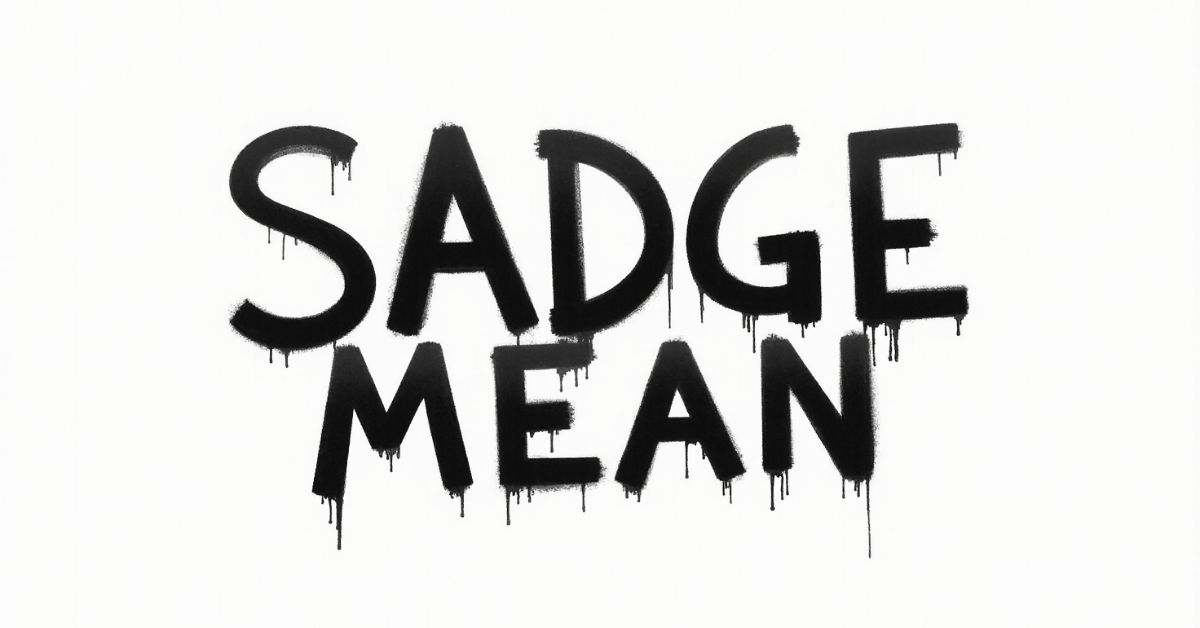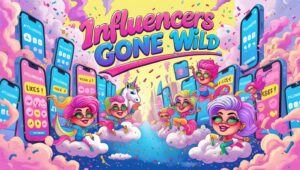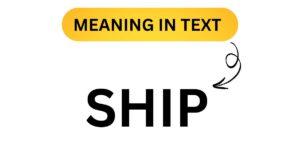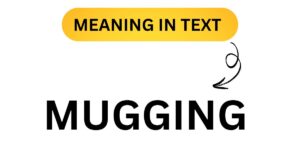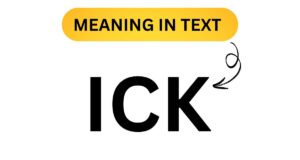Let’s face it: if you’ve been hanging around social media lately, you’ve probably come across the word “sadge” popping up in memes, tweets, or TikTok videos. You might have thought, “What on Earth does that mean?” It sounds like something out of a 90s cartoon or an ancient dialect of internet-speak, but in fact, it’s a relatively recent term that has gained popularity, especially among teens and Gen Z.
If you’re scratching your head right now, don’t worry! You’re not alone. It’s easy to feel like you’ve missed out on the latest linguistic trend, especially when every time you check your phone, a new slang term is popping up like a trendy, viral meme.
In this article, we’re going to break down the term “sadge,” explore where it came from, and offer some fun examples of how to use it in your daily life. So, grab your phone (or stay on the one you’ve been reading this on) and let’s dive into the world of “sadge.”
What Does “Sadge” Mean?
At its core, “sadge” is a word used to express sadness or disappointment, but with a twist. It’s a bit more than just saying, “I’m sad.” It carries a certain level of exaggerated, almost comical melancholy. You know the feeling when something isn’t quite catastrophic but still brings about that sigh-worthy, low-key miserable vibe? That’s the energy “sadge” is aiming for.
Imagine you just found out your favorite restaurant has closed for the night. Are you devastated? No. Are you mildly bummed out? Yes. That’s a sadge moment.
In a more official, dictionary-esque description: “Sadge” is a slang term used to express a feeling of light sadness or disappointment, often in a humorous or exaggerated manner.
The Origins of “Sadge”
Now, if you’re the type of person who loves to know the origin of every slang term (hello, fellow word nerds), you’ll be pleased to know that “sadge” comes from a combination of the word “sad” and a popular emote from Twitch, a streaming platform known for gaming. The “sadge” emote is a picture of a cartoon character with a downcast face, perfectly embodying that feeling of “yeah, I’m not okay, but I’m also not that upset.” The emote became a way for Twitch users to visually represent mild sadness or frustration, and the term “sadge” naturally emerged from that.
It’s kind of like how people started saying “LOL” after realizing that typing out “laughing out loud” was, you know, way too much work. Over time, the term “sadge” evolved from the Twitch emote into a standalone word that teens use for general, low-key sadness.
How Do You Use “Sadge” in Real Life?
Okay, so now that we know what “sadge” means and where it comes from, the real question is: how do you use it? Don’t worry—we’ve got you covered. Here are a few examples of how you might sprinkle a little “sadge” into your conversations:
- Example 1: You’ve been waiting all week to binge-watch your favorite show, and when you finally sit down to do it, you realize it’s been taken off Netflix.
- You: “Wait… sadge, it’s gone?”
- Example 2: You’ve been working all week on a group project, and your teammate doesn’t show up to the final presentation.
- You: “Ugh, this is such a sadge moment, honestly.”
- Example 3: You open your fridge to find that you’re out of snacks.
- You: “Sadge. I guess I’m just going to starve now.”
As you can see, “sadge” is perfect for those minor, everyday letdowns that make you roll your eyes and sigh, but not necessarily something that would lead you to break down in tears. It’s the term for when you’re sad but in a chill, almost humorous way.
When Is It Appropriate to Use “Sadge”?
Let’s take a moment to talk about when it’s appropriate to use this term. While “sadge” is fun, it’s still important to understand its context. It’s a bit tongue-in-cheek, which means it’s better suited for situations where the sadness is, well, not exactly life-altering.
Here are some scenarios where “sadge” works perfectly:
- Low-stakes disappointment: Like when you drop your fries on the floor or find out the concert tickets sold out.
- Mild frustration: For instance, when your Wi-Fi goes out, but you’ve got enough data on your phone to survive.
- In memes or joking conversations: Perfect for when you want to lighten the mood and get a laugh out of a mildly inconvenient situation.
However, it’s not great for expressing deep, serious sadness. If you’re going through something tough, you might want to save “sadge” for a more lighthearted situation, and reserve other terms for more significant emotions. For example, if your pet is sick or you’re dealing with a personal loss, you might want to skip “sadge” and instead use words that better reflect the gravity of those feelings.
Sadge and Other Internet Slang: How Does It Compare?
We’ve all seen a million and one slang terms emerge from the internet. “Sadge” is part of a larger trend where emojis and shorthand terms are used to convey complex feelings in a quick and sometimes funny way. So how does it stack up against other popular slang?
Here’s a quick rundown of similar terms:
- “RIP bozo”: Used to mock someone who has failed or experienced an embarrassing moment. Think of it as a playful insult. “Sadge” has a more sympathetic undertone, whereas “RIP bozo” is more about enjoying someone else’s misfortune.
- “F” (from “Press F to pay respects”): This is another meme-based term that conveys sympathy or respect, often in a humorous way. “Sadge” can overlap with “F” but is generally used to express your own disappointment, not empathy for someone else’s downfall.
- “Big sad”: This is like the cousin of “sadge,” but it’s typically used for bigger, more dramatic sad moments, rather than those “ugh, that’s annoying” type situations.
All these terms serve a similar purpose in creating a shared, quick language that gets emotions across especially when they’re too minor to warrant an entire sentence.
The “Sadge” Aesthetic
A big part of “sadge” isn’t just about the word it’s about the vibe. There’s an entire aesthetic surrounding “sadge” that involves exaggerating disappointment or sadness, while maintaining a kind of ironic detachment. This aesthetic is all about shrugging off small failures and laughing at the little things that go wrong in life.
Think of it like that meme where someone is lying face down on the floor with a caption that says, “Me, failing at life.” It’s tragic, but it’s also ridiculously relatable. This is the energy “sadge” carries—life is a little disappointing, but hey, let’s laugh about it.
Why Is “Sadge” So Popular?
So, what is it about “sadge” that has made it so popular, especially with younger generations? Well, for one, it’s relatable. Everyone has those small moments where things don’t go quite right, but they’re not terrible enough to warrant full-blown despair.
Also, there’s something inherently fun about using a term that doesn’t take itself too seriously. It’s almost like an inside joke with your friends, and the more you use it, the more it becomes a shared experience. Plus, it’s a great way to make light of things that, in the grand scheme of life, aren’t that big of a deal.
Wrapping Up
Now that you’re all clued in on “sadge,” we’d love to hear what you think! Have you used the term before, or is this your first time coming across it? Drop a comment or hit up your group chat to see how many “sadge” moments you can spot today. Remember, next time you spill your drink or your plans fall through, you’ve got the perfect word to describe that mild but real sadness: sadge.
Life’s too short to be too serious about these little moments. So, go ahead—embrace your inner “sadge” and share the love.
